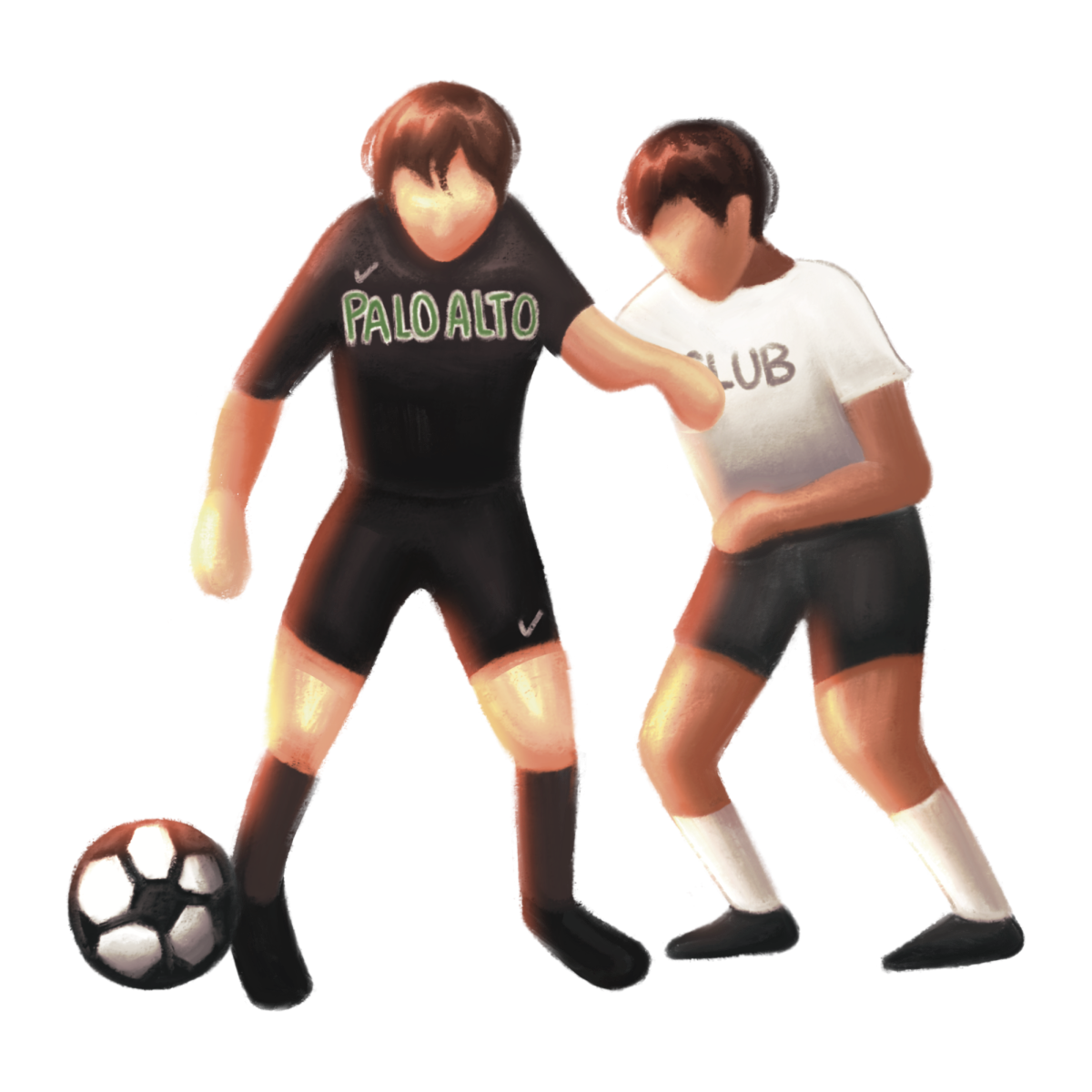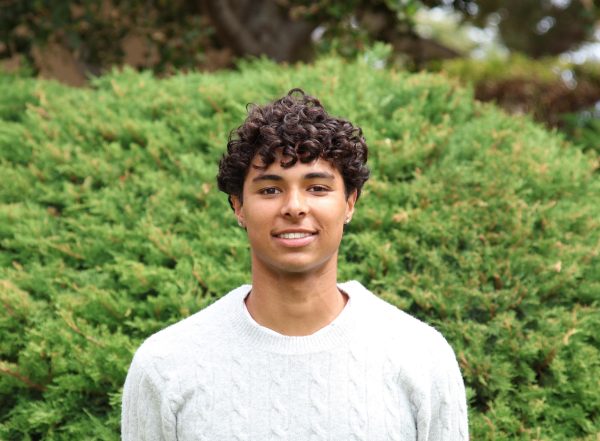While on the bus back to Palo Alto from her soccer team’s showcase in Arizona in December 2022, junior Ella Hwang received a devastating text from her high school coach: all of the Paly players who competed in the showcase had been reported for competing in club and high school competitions at the same time and would be prohibited from playing on the Paly team for the rest of the season.
Hwang, like many other California high school athletes, say they are frustrated by rules that prevent them from getting the exposure to college coaches that club tournaments offer while simultaneously enjoying the camaraderie of high school sports.
California Interscholastic Federation Bylaw 600 Article 60, Central Coast Section Article VII Section 11 and Santa Clara Valley Athletic League Article III Section 7, each progressively more restrictive, state that winter athletes are ineligible to play on a high school team if they play a sport in an outside competition simultaneously.
While fall and spring sports allow students to play in club and high school teams at the same time, SCVAL Commissioner Brad Metheany said the rule was implemented for all winter season sports to target infractions, which primarily come from soccer players.
“There are clubs from all three winter sports that continue to run events after high school begins practicing,” Metheany said. “A couple are wrestling teams, some are basketball teams, but the vast majority are soccer teams.”
Metheany also said the California Interscholastic Federation and SCVAL each have rules ensuring fairness and equal commitment to winter high school sports teams.
“Let’s say Paly had eight very strong athletes that were found to go off to a tournament,” Metheany said. “The players would delay their initial league games and when (the players) come back, eight players who had been attending practices and had been committed would have to come off the field or go to the bench.”
Every winter, students playing soccer at the Girls Academy or MLS Next level have the dilemma of committing to either their high school team or their club team. Hwang, who plays GA club soccer said high school and club environments are drastically different.
“Academy is more stressful since it’s more serious because of college coaches looking at you and your team expecting more from you,” Hwang said. “So, the stakes are a lot higher. But for me, high school is more about having fun.”
Junior Lydia Mitz, who is on the girls water polo team, said there is also a distinct cultural difference between being on a high school team and club team.
“Club water polo culture is a much more competitive environment with higher level teams,” Mitz said. “It’s more focused on big tournaments and getting recruited, whereas in high school anyone who wants to play can play and it’s more low-stress.”
Brandon Byer, who coaches junior varsity boys basketball and Amateur Athletic Union basketball, said high school basketball players are typically more committed to playing as a team.
“The biggest difference is trying to find an identity in the summer with AAU because a lot of times, kids get caught up in showmanship or trying to show their skill, and then it becomes ‘about me,’” Byer said. “As opposed to high school, where it’s easier to build a team identity because you’re in a season for a longer period. It’s more cohesive and you’re building around something more.”
Metheany also said the regulation started at the state level and became progressively more stringent as it extended to local levels.
“The CCS eligibility policy is driven by the state’s Rule 600, but as all section rules go, we have to be more restrictive,” Metheany said. “The CCS rule is that you have to make a commitment to your high school team before the start of the league.”
Paly Athletic Director Jennifer Crane said the SCVAL rule change in 2012 made player eligibility requirements stricter than before.
“Our SCVAL rule takes the CCS rule one step further and designates winter athletes to stop playing club before the Monday following Thanksgiving,” Crane said. “Before the rule change, players would have to decide the first league game.”
Hwang said that while she understands the rationale behind the rule, the punishment of prohibiting participation for the rest of the season is extreme, especially given that she had yet to play any high school games.
“I understand that (the league) wants to promote commitment and they had to enforce the rule since it was already in place, but the punishment was too harsh,” Hwang said. “They should make it so you have to be done with club before you start playing (for a) high school (team) so people are not going back and forth.”
Metheany said the rule’s existence despite multiple challenges to alter it is a testament to its importance to the league.
“This particular element of our constitution gets challenged every few years,” Metheany said. “Last year, the board of managers had a public meeting where they reaffirmed the rule with a majority of a 7-6 vote.”
Metheany also said the league sometimes creates infractions that go against the rules.
“Club coaches and leadership will sometimes tell the athlete or parents that it’s OK to attend competitions when it’s not,” Metheany said.
Metheany said students and parents have various motivations to report rule violations.
“A lot of the time, it’s parents who will report a rule break,” Metheany said. “Frequently, when their child didn’t go because they knew it would be against the rules or if they think they didn’t make it because of players who went against the rules, (they would report). Of course, there are also instances where opposing teams will report it.”
While some criticize the policy for preventing athletes from getting recruited, Metheany said there are still other legal ways to be seen by college coaches while on a high school team.
“The big kicker is that any athlete can go to a university showcase or event so long as it is not a team event,” Metheany said. “That means there are still other ways to get a scholarship or get recruited.”
Hwang, though, said these types of events, called identification camps, are too time-consuming and expensive to be considered a viable replacement for club tournaments.
“It’s a really big thing to just go to an ID camp, and it’s not something that you can do without planning. I don’t think it’s fair to say that it’s an opportunity that everyone can have when it’s not,” Hwang said. “Also, the money spent on flights and the high price of ID camps is on top of the money that you’d be paying for your club.”
Regardless, Metheany said coaches and players benefit from the rule as it instills a sense of commitment, an integral value in the SCVAL constitution.
He said, “The coaches normally approve of it because they want to form a team, players for practices and scrimmages, and an overall commitment to the team.”


